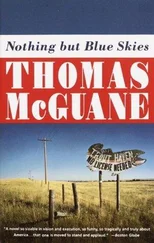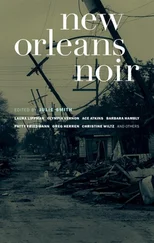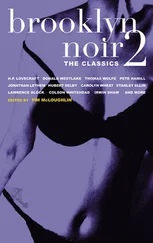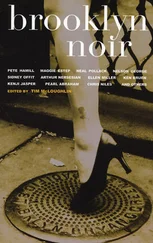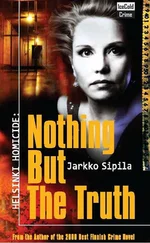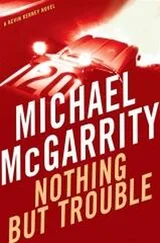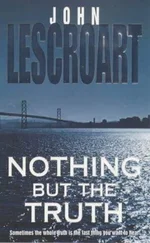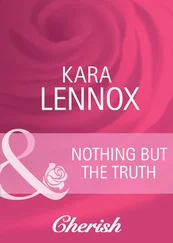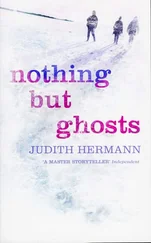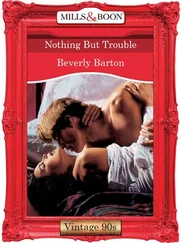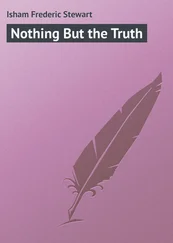Brooklyn Noir 3: Nothing but the Truth

Introduction
Stranger than fiction
One sweltering evening a couple of years ago I was giving a reading at Tillie’s, a café in Fort Greene, Brooklyn. It was part of a summer-long blitz to help publicize the first Brooklyn Noir . The contributors and I did forty-two readings in New York City that summer, all but six in Brooklyn. Predictably, a lot of them are now a blur. This one, however, stands out vividly in my mind. Patricia Mulcahy, the proprietor of Tillie’s, welcomed me, and said, “I have a Brooklyn Noir story to tell you.” She then related the tale that is included in this volume, about the killing of “Bobby from Russia.”
“How does it end?” I asked.
“How does it end?” she said. “It’s a true story.”
I wound up at the Alibi Club that night, just down DeKalb from Tillie’s, drinking and scheming with Akashic’s publisher, Johnny Temple. We decided that at some point it would be interesting to do an anthology of true crime stories with the same mood and geographic structure as Brooklyn Noir . After all, it seemed as though every bar, bookstore, or library we read at had some connection to a sinister event. People were all too eager to point out back rooms or side streets where something had been heisted or someone had been whacked. What fun it would be to record those stories. What fun indeed.
As this book began to coalesce, the vibe of the project changed, in a small but steady way. It was insidious, like swimming in a deceptively gradual current.
There is a difference, as editor, between cheering the literary accomplishment of a fiction writer who has delivered a brilliant story about a serial killer or hit man, and reading the true account, however beautifully written, of a young woman raped, murdered, and forgotten. So this book, though it has its light moments (and thank God for those), is for me the darkest of the Brooklyn Noir series. These pieces remind us that crime is personal. It happens to us and to our neighbors. Sometimes it happens because we do nothing to prevent it. Life does not always offer the moral arc we so desperately crave in fiction. If it did, we’d have no need for myths and fables, religion or miracles.
Thomas Adcock was the first contributor to deliver a story, and I’m grateful that he then agreed to coedit the book; he brought aboard a posse of writers of which I could have only dreamed. Because the stories are about crime, about Brooklyn, and true, more than one ends in court proceedings. And because Brooklyn is the world’s largest small town, real life overlaps in ways that fiction does not. My own reminiscence of events in and around the courts, “Snapshots,” sits at the intersection of stories by Errol Louis, Dennis Hawkins, and Denise Buffa.
As with the two previous volumes, our emphasis is on the quality of the writing as well as the storytelling itself, and just as the earlier anthologies have done their bit to muddy the waters between genre and literary fiction, here we’ve done our best to blend reporting, personal essay, and memoir.
It’s been an interesting few years since Brooklyn Noir debuted. That book, as of this writing, has just entered its fifth printing, with Brooklyn Noir 2: The Classics headed for its second. There are now more than twenty volumes of original fiction in the Akashic Noir Series, with another dozen in production. That’s four hundred or so stories that might not otherwise have been published, or for that matter written. No small feat given the paltry opportunities these days for publishing short fiction. So now let’s see what we can do for true crime.
Read this book. Enjoy it. Be horrified by it. Carry it with you always. And the next time you’re watching a particularly bizarre and salacious news item on the television set in your neighborhood pub, and the guy on the next stool says, “You can’t make this shit up,” smack him with it.
Tim McLoughlin
Brooklyn, New York
April 2008
In which members of one group at one end of the block try to find and capture hiding members of an opposing group. A captured player is dragged into a chalk circle on the pavement at mid-block,by a hunter who holds him/her there long enough to holler, “Ring-a-Levio, 1-2-3!”
A spring afternoon in the Meadow, that “Long, loud scream”
by Constance Casey
Prospect Park
Who” is important in this story: a man and four teenaged boys.
“What” is easy to answer: a bike and a gun.
“When” is a sunny afternoon in June.
“Where,” in this case, is unusually significant.
Our location is Prospect Park, the green heart of Brooklyn. Of the five boroughs of the city of New York, Brooklyn is the one with the least green space per person. On a map, the park is a bit to the west of Brooklyn’s dead center.
On the afternoon of June 1, 1993, a forty-two-year-old drama teacher named Allyn Winslow rode his new trail bike to a boulder near the top of Prospect Park’s Quaker Hill, where he’d often gone for picnics with his wife and two children.
He may have stopped atop the hill to lean against the big rock and savor a friendly, familiar place. He may have noticed he was just up from the Quaker cemetery where fellow actor Montgomery Clift is buried. He may have paused to adjust his bike seat or take a drink from his water bottle.
There’s no way to know.
Four teenagers surrounded him suddenly and tried to steal his turquoise bike. Winslow resisted by attempting to fend them off with a tire pump, and when he got on his bike and rode away, one of the teens fired a .22 caliber revolver — three shots into Winslow’s back, one into his buttocks.
Winslow, who had run three New York City marathons, made it down the hill and into the park’s Long Meadow — a bit less than half a mile — where he fell to the ground and died.
Three of the gunshot wounds were superficial. The fourth bullet angled up through his right lung to sever his aorta, the vessel that carries blood from the heart to the rest of the body.
“I was trying to scare him,” said the shooter, sixteen-year-old Jerome Nisbett. This he told the police after his arrest a few days following the fatal shooting. His finger got stuck on the trigger and the gun just kept firing, he said.
At Nisbett’s trial, a police ballistics expert effectively rebutted that excuse: “In a revolver, the trigger has to be pulled one time for one shot to be fired, and then pulled again for the next shot to be fired.”
Winslow’s death generated enormous publicity, as well as understandable sorrow and sympathy among Brooklyn residents. Especially for those who used the park, the killing also generated considerable fear.
That a pack of African American boys, albeit a small pack, attacked a white man hit a raw, racial nerve. Although four years had elapsed between the crime at Quaker Hill in Prospect Park and the 1989 case of a white female jogger in Manhattan’s Central Park — in which a pack of five black youths out “wilding,” as it was called, raped their victim and then beat her nearly to death — memories were quickly revived.
Amidst high public emotion around Winslow’s death, arrests were made in a week and personally announced by the city’s first black mayor, David Dinkins.
That the four suspects were so young, said the mayor, “boggles the mind and crushes the heart.”
Читать дальше


